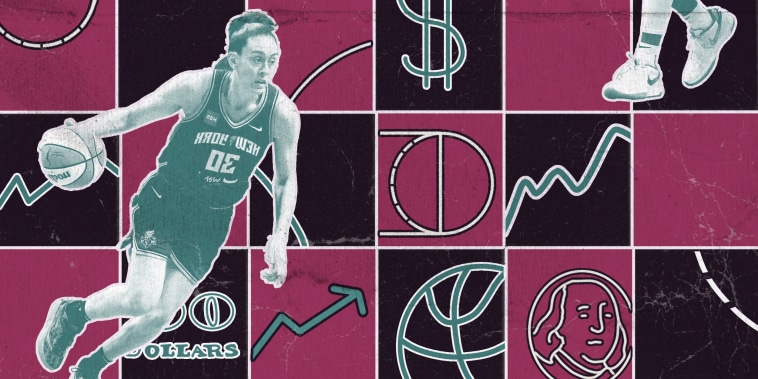
Caitlin Clark’s Big Payday Sheds Light on Stark WNBA-NBA Economic Divide
Caitlin Clark’s Pro Salary Exposes an Undeniable Economic Reality Separating the WNBA and NBA
The glaring disparity between the salaries of female and male professional athletes has long been a point of contention in the sports world. Caitlin Clark, a rising star in women’s basketball, recently signed a lucrative endorsement deal that highlights the stark economic divide between the Women’s National Basketball Association (WNBA) and the National Basketball Association (NBA). While Clark’s deal signifies progress for women in sports, it also sheds light on the challenges that female athletes continue to face in achieving financial parity with their male counterparts.
Clark’s endorsement deal is a significant milestone that reflects the growing recognition and support for women’s sports. Her talent, charisma, and marketability have rightfully attracted attention and opportunities that have the potential to elevate the status of women’s basketball. By securing a lucrative endorsement deal early in her career, Clark has set a positive example for aspiring female athletes and demonstrated the value of investing in women’s sports.
However, the fact that a young, emerging talent like Clark can sign a substantial endorsement deal while established WNBA players struggle to make ends meet underscores the deep-rooted economic disparities in professional sports. The average salary for WNBA players is a fraction of what NBA players earn, despite both leagues having comparable levels of skill, dedication, and entertainment value. This persistent wage gap not only devalues the contributions of female athletes but also perpetuates gender inequality in sports and society at large.
The economic realities that hinder the growth and sustainability of women’s sports are multifaceted. Factors such as limited media coverage, unequal marketing opportunities, and institutionalized biases contribute to the undervaluing of female athletes and their achievements. The lack of investment and resources allocated to women’s sports further exacerbates the disparities in salaries, endorsements, and overall visibility compared to men’s sports.
To address the economic disparities between the WNBA and NBA, concerted efforts are needed at various levels of the sports industry. Greater financial support from sponsors, broadcasters, and fans can help elevate the profile of women’s sports and create more opportunities for female athletes to thrive. In addition, advocating for equal pay, representation, and resources for female athletes is crucial in challenging the status quo and promoting gender equity within sports organizations and society.
Ultimately, Caitlin Clark’s pro salary serves as a reminder of the ongoing struggles that female athletes face in achieving economic parity with their male counterparts. While her endorsement deal signifies progress and potential for change in the sports landscape, it also underscores the need for greater investment, recognition, and support for women’s sports. By acknowledging and addressing the economic realities that separate the WNBA and NBA, we can work towards creating a more equitable and inclusive sports industry for all athletes, regardless of gender.
